Can We Test Dark Energy Using The Solar System?
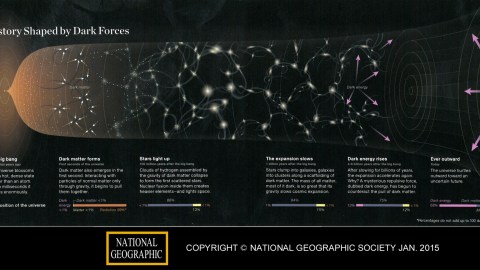
The force that has only been seen on the largest cosmic scales affects smaller ones, too. We just need to look well enough.
“There are still so many questions to answer. When you look at any part of the universe, you have to feel humbled.” –Saul Perlmutter
One of the biggest revolutions in our scientific understanding of the Universe occurred at the end of the last century, when we discovered the existence of dark energy. Prior to that, the Big Bang — where the Universe began from a hot, dense, rapidly expanding state that cooled and spread out over time — was the starting point for the ultimate cosmic fight.

As great as the initial expansion was, all the matter-and-energy in the Universe implied there was a tremendous gravitational force working to pull everything back together. It was taken as a given that there would be three possible fates to the Universe:
- Gravity would eventually overcome the initial expansion, and the Universe would stop expanding, reverse its direction and begin contracting. Over time, it would recollapse in a Big Crunch.
- The initial expansion would have been too great, and try though it might, gravity would never bring the Universe back together. Instead, everything in the Universe would expand away from one another, resulting in a Big Freeze.
- Or perhaps the Universe was just perfectly balanced between these two cases, where one more proton would cause a recollapse, but that proton isn’t there at all. This gives us a Critical Universe, right on the brink of recollapse and eternal expansion.
But the Universe had a surprise for us.
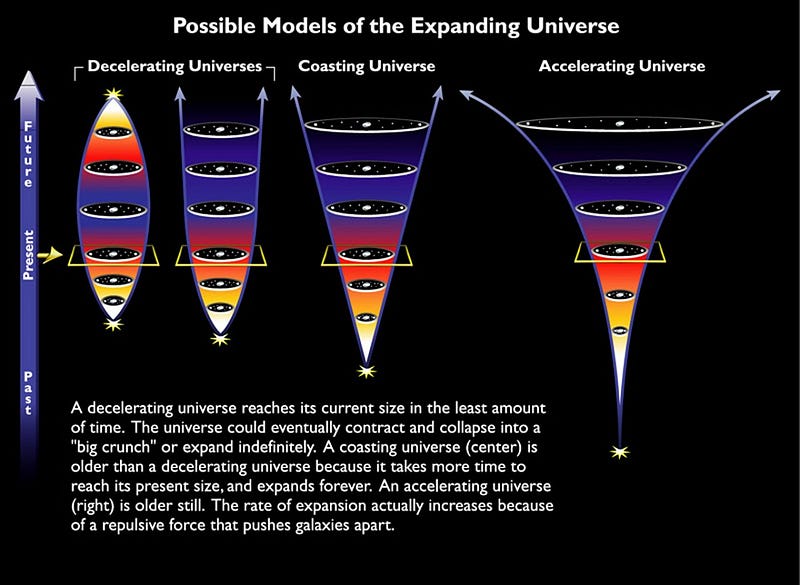
Rather than any of those three cases, the Universe’s expansion slowed down for a time, but then the distant galaxies started speeding up as they receded from us. This switchover happened about 6 billion years ago — when the Universe was 7.8 billion years old — and changed the fate from all of the three expected cases.
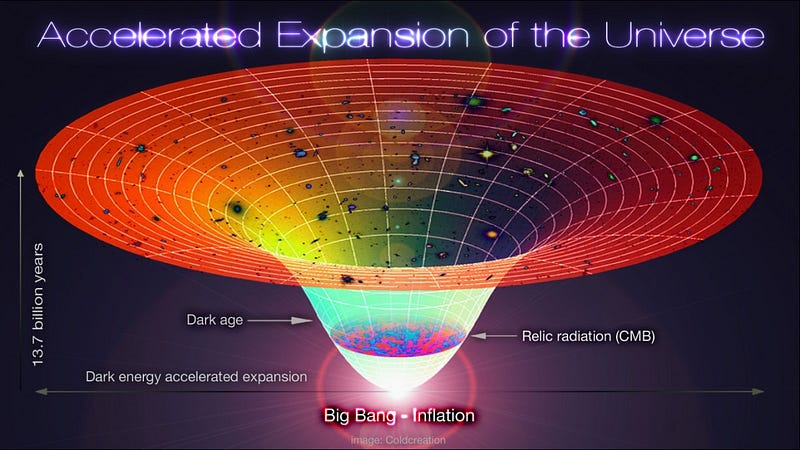
Sure, the Universe will end in a Big Freeze, but it’s going to freeze faster than anyone had expected. Moreover, all the distant galaxies, groups and clusters that aren’t already gravitationally bound to our own (which is everything more than about 3 million light years away from us) will be pushed away from us by this dark energy: the expansion of space will be unstoppable.
But how does this affect physics on smaller, local, and potentially testable scales? If we want to understand something in science, it isn’t merely enough to describe what it’s doing; we want to understand how it actually works! While the force of dark energy isn’t quite able to unbind things like galaxies, star clusters or solar systems, it does have real effects on the fabric of spacetime itself. While those effects may be small and subtle, given enough precision, we should be able to detect them.
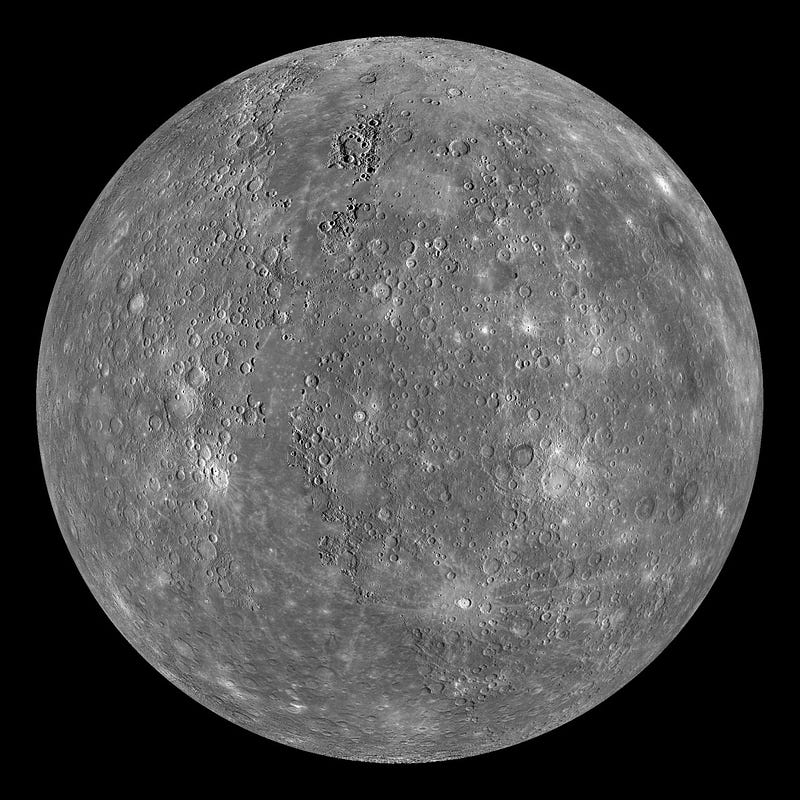
From a historical perspective, the “problem” with Newtonian gravity that led to Einstein’s theory of General Relativity — celebrating its 100 year anniversary this autumn — was the orbit of Mercury. You see, if there were only two masses in the Solar System, the Sun and Mercury, then Mercury would move in a perfect ellipse, closing in on itself with every orbit. But there are other masses in the Solar System as well: planets, asteroids, moons, comets and more. These cause the ellipse that Mercury’s orbit makes to precess, or for its ellipse to “circle” around the Sun over time.

The rate of precession predicted by Newtonian gravity was about 532 arc-seconds per century (or about 0.2 degrees per century), while the observed precession was 575 arc-seconds per century. The difference wasn’t due to an unaccounted-for mass, but was rather due to Einstein’s relativity, which explained the missing 43 arc-seconds per century and made a whole slew of other predictions.
What’s interesting about a Universe that contains dark energy is that it causes an extra precession due to that cosmological constant, or the energy inherent to space itself. As Hideyoshi Arakida recently worked out, that results in an extra precession for Mercury of about 0.4 trillionths of an arc-second per century, while the number for Earth (given in the graph below) is about a factor of 30 smaller.
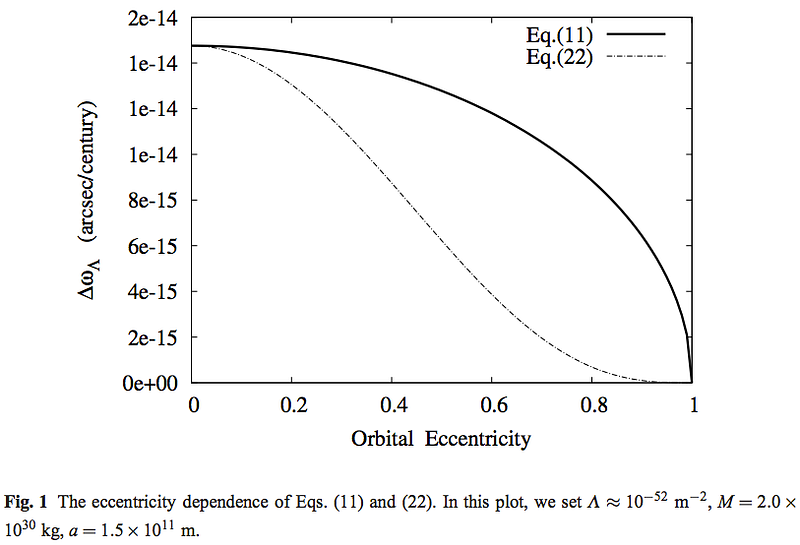
This isn’t practically testable now or anytime soon, as our uncertainties from both observational and calculational limitations are at the hundredth of an arc-second per century precision, but it’s nice to know that dark energy really is testable in principle, and that as our observations improve — mapping asteroids, the Kuiper belt, the Oort cloud and all the moons — along with our calculations power, we’ll be able to tell whether dark energy exists in the Solar System, and whether it’s a cosmological constant (or not) after all.
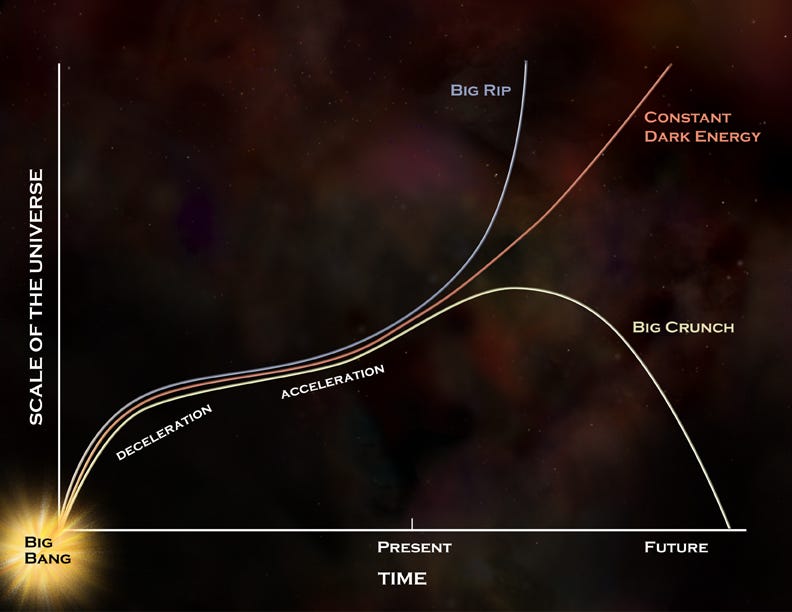
Although it isn’t practical just yet, we can test dark energy using the Solar System itself. It’s just a matter of technology, tenacity, and time.
Leave your comments on our forum, support Starts With A Bang! on Patreon, and pre-order our first book, Beyond The Galaxy, today!





